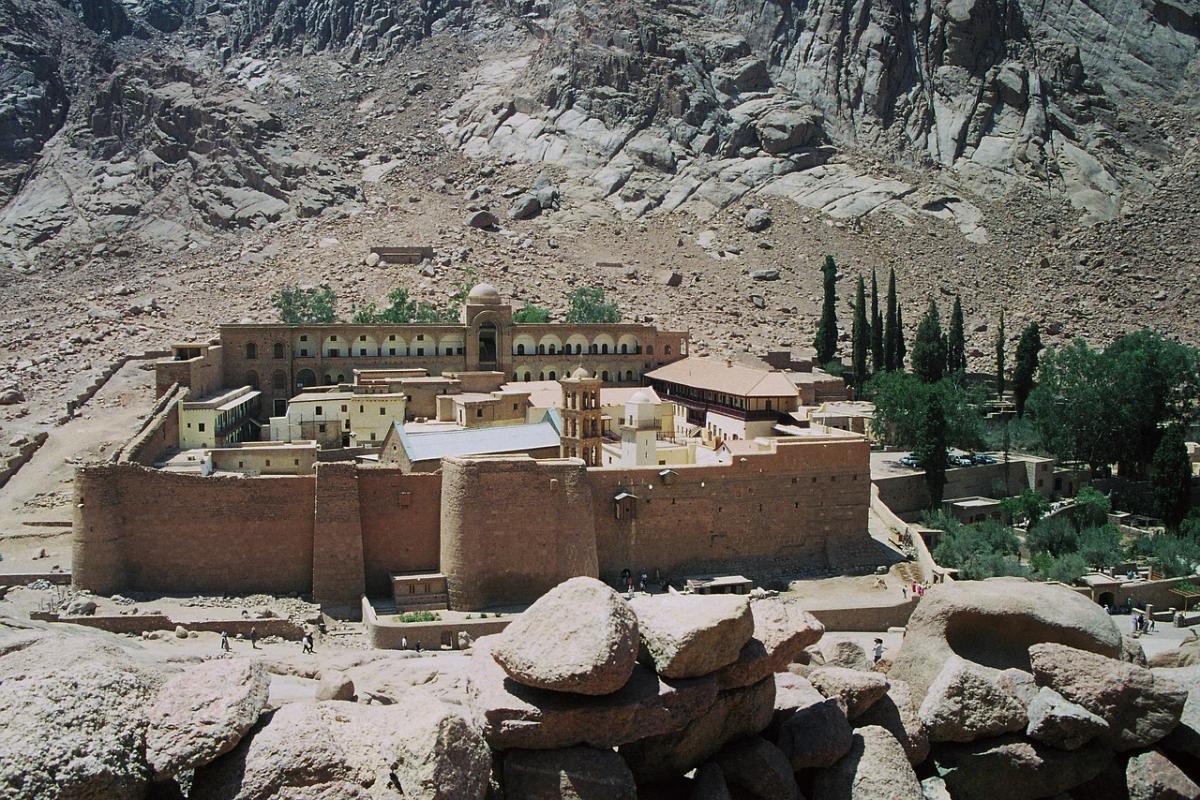
What is the Spiritual Journey to Mount Sinai and St. Catherines Monastery Really Like?
In the remote and rugged high desert of Egypt's Sinai Peninsula, a triangular land bridge connecting Africa and Asia, lies a landscape of immense historical and spiritual gravity. This is a primeval world of jagged granite peaks and silent, sun-scorched wadis, a terrain that for millennia has served as a crucible for faith. It is here that one of the world's most sacred mountains rises: Mount Sinai. Known in the Hebrew Bible as Har Sīnay and interchangeably as Mount Horeb, and in Arabic as Jebel Musa, the "Mountain of Moses," this peak is a central axis for the three great monotheistic religions: Judaism, Christianity, and Islam. The mountain's sanctity is rooted in a single, foundational event: the divine revelation to the prophet Moses. According to the biblical Book of Exodus, it was upon this summit that God gave Moses the Ten Commandments, the stone tablets of law that would form the bedrock of the covenant between God and the Israelites. The biblical narrative describes a dramatic theophany, a moment when the divine presence manifested with terrifying power. The mountain was enveloped in a thick cloud, it quaked violently, and was filled with smoke and fire as thunder roared and the blast of a trumpet sounded. For forty days and nights, Moses remained on the holy mountain, returning with the laws that would shape Western civilization.
While there is no definitive archaeological proof that the 2,285-meter (7,497-foot) peak known today as Jebel Musa is the biblical Mount Sinai, Christian tradition identified it as such as early as the third century AD. This identification, while not universally accepted by modern scholars, has anchored centuries of devotion to this specific place. Some researchers have noted that the biblical descriptions of fire and smoke are suggestive of a volcano, a feature absent in the Sinai Peninsula but present in nearby northwestern Saudi Arabia. Other theories connect the name "Sinai" to the ancient Mesopotamian moon god, Sin, or to the Hebrew word for the bush,
seneh, from which God first spoke to Moses.
Yet, to focus solely on the debate over its precise location is to miss a more profound truth. The physical environment of Mount Sinai is not merely a passive backdrop for these events; it is an active participant in the spiritual narrative. The starkness of the landscape-its harshness, its profound silence, and its raw, intimidating grandeur-serves to strip away the mundane and prepare the human spirit for an encounter with the sublime. The awe-inspiring natural phenomena described in scripture, mirrored in the breathtaking sunrises that greet modern pilgrims, command a sense of reverence and humility. This "intimate relationship between natural grandeur and spiritual commitment," as the UNESCO World Heritage Committee described it, is the very essence of the Sinai experience. The landscape itself is a character in the story of revelation, its austere beauty a catalyst for the spiritual journey.
The Fortress of Faith: A 1,700-Year History of St. Catherine's Monastery
At the foot of the holy mountain, nestled in a high desert valley, stands a testament to enduring faith: the Sacred Monastery of the God-Trodden Mount Sinai, more commonly known as St. Catherine's Monastery. It is the world's oldest continuously operating Christian monastery, a fortress of faith and culture that has withstood the tides of history for nearly 1,700 years.
From Hermits to Fortress
The origins of the monastery lie in the early Christian tradition of asceticism. Drawn by the sanctity of the place where Moses encountered the Burning Bush, Christian hermits and anchorites began to settle in the remote wilderness of the Sinai during the 3rd and 4th centuries AD. The first formal structure was a small chapel built at the site of the Burning Bush, ordered in the 4th century by Empress Helena, the mother of Emperor Constantine the Great, who had made Christianity the favored religion of the Roman Empire.
As the community of monks grew, so did the dangers of their isolated location. To provide protection and a permanent home for this burgeoning monastic community, the Byzantine Emperor Justinian I commissioned the construction of the massive fortified monastery that stands today. Built between 548 and 565 AD, its towering granite walls enclosed the Chapel of the Burning Bush and created a sanctuary that has, remarkably, never been destroyed. This makes it not only a spiritual beacon but also an unparalleled living museum of Byzantine architecture.
The Saint and the Name
For its first few centuries, the monastery was dedicated to the Virgin Mary, as the Burning Bush was seen as a prefiguration of the Incarnation-Mary holding the fire of divinity within her without being consumed. Its name changed due to the legend of another powerful female figure: Saint Catherine of Alexandria.
According to tradition, Catherine was a brilliant and beautiful princess and scholar in 4th-century Alexandria who converted to Christianity. For her faith, she was martyred by the Roman Emperor Maxentius. The legend holds that after her death, angels carried her body to the peak of the highest mountain in the Sinai Peninsula, now known as Jebel Katerina. Centuries later, around the year 800, monks from the monastery discovered her remains and brought her holy relics back to the fortress. The presence of these relics transformed the monastery into a major pilgrimage destination for Christians across the world, and it gradually became known as St. Catherine's Monastery.
A UNESCO World Heritage Site
In 2002, the entire Saint Catherine Area, encompassing the monastery, Mount Sinai, and the surrounding 601 square kilometers of rugged landscape, was inscribed as a UNESCO World Heritage Site. The designation was granted based on several criteria that underscore its universal value. UNESCO recognized it as an outstanding example of human creative genius and a unique testimony to a living cultural and monastic tradition stretching back to the 6th century. It stands as the oldest Christian monastery to have survived intact and retained its original function without interruption. Most importantly, the site was recognized for its profound spiritual significance to three world religions, a place where, like the Old City of Jerusalem, the faiths of Judaism, Christianity, and Islam converge.
A History of Coexistence
The monastery's remarkable 1,700-year history of continuous operation is often attributed to its remote, isolated location. While its geography certainly played a role, a deeper analysis reveals that its survival is equally, if not more, a product of a sophisticated and sustained strategy of proactive diplomacy and cultural accommodation. This was not a community that simply hid from the world; it actively engaged with it to ensure its own protection.
The most critical example of this diplomacy is the monastery's relationship with Islam. According to tradition, the Prophet Muhammad himself visited the monastery. In the 620s, the monks sent a delegation to Medina to seek his protection. In response, the Prophet issued the Ashtiname of Muhammad, or the Patent of Mohammed, a charter of protection that is a foundational document in the history of interfaith relations. This charter granted the monks freedom of worship, protection from persecution, and exemption from taxes and military service.
This spirit of accommodation continued through the centuries. During the Crusades, a period marked by bitter conflict between the Orthodox and Catholic churches, the monastery was patronized by both the Byzantine emperors in Constantinople and the Catholic rulers of the Kingdom of Jerusalem. A small mosque, with its own minaret, was constructed within the monastery walls during the Fatimid era, reportedly to appease Muslim rulers and prevent attacks. For centuries, the monastery was a vibrant, multi-ethnic community, home to not only Greek monks but also Arabs, Syrians, Georgians, and Slavs.
This delicate balance of diplomacy extended to the local Bedouin population. The Jabaliya tribe, who live in the St. Catherine area, are traditionally held to be the descendants of the Roman soldiers sent by Emperor Justinian to guard the monastery in the 6th century. Over generations, they developed a symbiotic relationship with the monks, serving as protectors, guides, and workers, a relationship that continues to this day.
The monastery's history, therefore, is not one of passive survival in isolation, but of active, intelligent engagement with the shifting political and religious powers of the region. It has functioned less as a remote fortress and more as a dynamic embassy of faith. This long-standing, human-scaled balance is what makes the current threat from Egypt's "Great Transfiguration" megaproject so alarming. This massive development, which aims to bring over a million tourists a year to the area, has been criticized by UNESCO and conservation groups for destroying the integrity of the historic landscape and threatening the fragile ecosystem. It risks replacing the delicate web of relationships that ensured the monastery's longevity with an impersonal, industrial model of tourism, severing the very connections that allowed it to endure for seventeen centuries.
The Ark of Treasures: Inside the Walls of St. Catherine's
To step inside the ancient walls of St. Catherine's is to enter a veritable ark, a sanctuary that has preserved some of the world's most priceless spiritual and cultural treasures against the ravages of time, conflict, and iconoclasm.
The Library of Ancient Wisdom: The World's Oldest Library
The monastery's library, founded sometime between 527 and 565 AD, is recognized as the oldest continuously operating library in the world. Its collection of early codices and manuscripts is second in size and importance only to that of the Vatican Library. The shelves hold over 3,300 manuscripts, the majority in Greek, but with significant works in Arabic, Syriac, Georgian, Slavonic, Coptic, Armenian, and Ethiopic, reflecting the monastery's historic role as a crossroads of cultures.
The crown jewel of this collection, though no longer housed there in its entirety, is the Codex Sinaiticus. This magnificent manuscript, dating to the mid-4th century (c. 350 AD), is one of the most important books in the world. It is the oldest surviving complete copy of the New Testament and, along with the Codex Vaticanus, one of the two oldest manuscripts of the Greek Bible. Its text is considered by scholars to be a vital witness to the earliest form of the Christian scriptures.
The story of its modern "discovery" is filled with drama and controversy. In the 1840s and 1850s, a German biblical scholar named Constantine Tischendorf visited the monastery. He recognized the codex's immense antiquity and, on his third visit in 1859, persuaded the monks to let him take the manuscript to Russia to be published, promising to return it upon request. Instead, the codex was kept by the Russian government and, in 1933, sold to the British Museum for the enormous sum of £100,000. Today, the bulk of the manuscript resides in the British Library, with other leaves and fragments held in Leipzig, St. Petersburg, and at Sinai itself, where new fragments were discovered as recently as 1975. The monastery has always maintained that the codex was taken under false pretenses and laments its loss. Other invaluable texts include the
Codex Syriacus, a 5th-century palimpsest containing an Old Syriac translation of the Gospels.
Windows into Heaven: The Sinai Icon Collection
The monastery's icon collection is without parallel. Over half of all surviving Byzantine icons in the world are preserved within its walls. This incredible preservation is due to two key factors: the dry, stable desert climate, and the monastery's unique historical position. During the Byzantine Iconoclasm of the 8th and 9th centuries, when emperors in Constantinople ordered the destruction of religious images, the Sinai Peninsula was under Muslim rule. The monastery was thus out of reach of the iconoclasts, becoming a safe haven for these sacred "windows into heaven".
The most celebrated of these is the Christ Pantocrator. This powerful 6th-century masterpiece is the earliest known icon of Christ as Pantocrator, or "Ruler of All". Created using the ancient encaustic technique, where pigments are mixed with hot wax, the icon possesses a luminous depth. It is renowned for its profound theological depiction of the dual nature of Christ. The right side of Christ's face (the viewer's left) is calm and welcoming, representing his human nature and role as savior, with his hand raised in a gesture of blessing. His left side is stern and authoritative, representing his divine nature and role as judge, with his hand clutching a thick Gospel book.
Other priceless works include exquisite 6th and 7th-century encaustic icons of the Theotokos (the Virgin Mary enthroned) and of Saint Peter holding the keys to the kingdom. The collection also features important examples from later periods, including the hieratic icons of the Comnenian dynasty, the more stylized works of the Palaeologan era, and the detailed paintings of the Cretan school.
Sacred Architecture and Hallowed Ground
The very buildings of the monastery are treasures in themselves.
The Basilica of the Transfiguration: The main church, the Katholikon, is a magnificent 6th-century structure commissioned by Justinian. Its massive wooden doors and king post roof trusses are original to its construction, making them the oldest known surviving roof trusses in the world. The spiritual climax of the basilica is the apse, which is adorned with the breathtaking 6th-century mosaic of the Transfiguration of Christ. The mosaic depicts Christ in radiant glory, flanked by the prophets Moses and Elijah, with the apostles Peter, James, and John prostrate at his feet, a fitting theme for a site so closely associated with divine revelation.
The Chapel of the Burning Bush: Located directly behind the main altar of the basilica lies the holiest place in the monastery. This chapel marks the spot where, according to the Old Testament, God spoke to Moses from a bush that burned but was not consumed. Pilgrims must remove their shoes before entering, just as God commanded Moses to do, for it is "holy ground". A rare bramble bush growing on the monastery grounds, a species native to the Sinai, is traditionally venerated as the living descendant of the original Burning Bush.
The Well of Moses: This ancient well, still one of the monastery's main water sources, is believed to be where Moses met his future wife, Zipporah, after defending her and her sisters from other shepherds.
The Ossuary: A unique and somewhat sobering monastic tradition is visible in the monastery's ossuary, or charnel house. This small building contains the neatly arranged skulls and bones of the countless monks who have lived and died at the monastery over the centuries, a stark reminder of mortality and the continuity of the monastic life.
The Pilgrim's Ascent: Two Paths to the Summit
The journey to the summit of Mount Sinai is a pilgrimage in itself, a physical and spiritual ascent that begins at the monastery's gates. There are two primary, well-defined routes that lead climbers toward the holy peak: the gentler, winding Camel Path and the steeper, more direct Steps of Repentance. Both paths eventually converge at a wide plateau known as Elijah's Basin, named for the prophet who is said to have taken refuge there.
From this basin, the final stage of the ascent is the same for everyone. All pilgrims, regardless of their initial route, must climb the last 750 steps on foot. This final section is steep, with steps made of rocky and uneven stones, demanding focus and physical effort to reach the summit.
At the peak, which stands at an elevation of 2,285 meters (7,497 feet), pilgrims are greeted by a small Greek Orthodox chapel dedicated to the Holy Trinity and a small mosque, both of which are usually kept locked. Nearby is "Moses' Cave," a small rock shelter where the prophet is believed to have waited to receive the Ten Commandments from God.
The choice between the two main paths allows pilgrims to tailor the ascent to their physical abilities and spiritual intentions. The following table provides a detailed comparison to aid in this decision.
| Feature | Camel Path (Siket El Basha) | Steps of Repentance (Siket Sayidna Musa) |
| Origin & History | Constructed between 1849 and 1853 by order of Abbas Pasha I of Egypt, who initially planned to build a palace on the summit but later abandoned the project. | Carved directly into the rock by a single monk in the 6th century as a profound act of personal penance, with each step symbolizing his repentance. |
| Length & Distance | A longer, winding route of approximately 4 to 5 kilometers to reach Elijah's Basin. The path consists of a series of wide switchbacks. | A much shorter, more direct, and significantly steeper route to Elijah's Basin. |
| Estimated Time | Approximately 2 to 3 hours to ascend to Elijah's Basin at a steady, moderate pace. | Approximately 2 hours, but this is highly dependent on individual fitness. The steepness often makes the pace much slower than the Camel Path. |
| Difficulty & Terrain | Considered the easier route. It features a gentle, steady incline on a wide, clear path. Some gravelly patches can be slippery, especially on the descent. | A taxing and physically demanding climb. It consists of 3,000 steep, uneven, and roughly hewn rock steps that require strong knees, good balance, and concentration. |
| Key Characteristics | Camels can be hired to carry climbers up to Elijah's Basin, making it accessible for those with limited mobility. Several Bedouin-run kiosks along the way offer tea, snacks, and blankets for rent. It is the most common route for tourist groups, especially for night climbs. | Historically used by monks to test the piety of ancient pilgrims. Offers stunning mountain scenery and dramatic views of the monastery below. It is not recommended to attempt this path in the dark due to the treacherous footing. |
| Best For | Hikers with average fitness, those who wish to conserve energy for the summit experience, and the vast majority of pilgrims who ascend at night to witness the sunrise. | Fit and experienced hikers seeking a significant physical and spiritual challenge, those ascending or descending in daylight, and individuals who prioritize dramatic scenery over a more comfortable ascent. |
A Spiritual Summit: The Night Climb and the Sinai Sunrise
For most modern pilgrims, the journey to the summit of Mount Sinai is a nocturnal one, a powerful experience that transcends mere tourism. The typical pilgrimage begins late in the evening, with travelers departing from hotels in coastal resorts like Sharm El Sheikh or Dahab between 8:00 PM and 11:00 PM. A drive of several hours through the dark, silent desert leads to the base of the mountain, with the climb itself commencing in the deep of the night, often between 1:00 AM and 3:00 AM.
The ascent in darkness is an experience imbued with a unique atmosphere. The world is reduced to the pool of light from one's headlamp on the path ahead, while above, the desert sky is a brilliant tapestry of stars, unobscured by city lights. A sense of shared purpose unites the diverse crowd-a quiet, snaking line of lights moving steadily up the mountain, composed of devout pilgrims, curious adventurers, and people from every corner of the globe. The presence of the local Bedouin guides, moving with quiet confidence, and the slow, steady tread of their camels, adds a timeless, almost biblical quality to the procession.
This entire physical journey serves as a powerful metaphor for a spiritual one. The ascent begins in literal darkness, mirroring a state of spiritual searching or uncertainty. The path is arduous and physically demanding, representing the trials and tribulations inherent in any profound personal or spiritual quest. Yet, the pilgrims are not alone; they are part of a community, guided by those who know the way, reflecting the importance of tradition and fellowship in a life of faith. The entire effort is directed toward a single goal: the sunrise.
Reaching the summit in the cold, profound silence of the pre-dawn hour brings a palpable sense of achievement and anticipation. Then, the climax arrives. As the first light breaks the horizon, the sky and the surrounding landscape are transformed. The sun appears, slowly and majestically, painting the jagged, ancient peaks in breathtaking hues of orange, pink, and gold. This moment is universally described by those who witness it as magical, transcendent, and deeply spiritual-a moment of divine illumination that makes every difficult step of the journey worthwhile.
Standing on that holy peak, bathed in the first light of a new day, with the vast, silent wilderness stretching out below, is a time for profound reflection. It is a moment of clarity and peace, a feeling of connection not only to the divine but to the countless generations of pilgrims who have stood on that very spot over the centuries, seeking the same sense of awe and revelation. The peaceful coexistence of the small Christian chapel and the Muslim mosque at the summit serves as a quiet but powerful symbol of the unity that this sacred mountain inspires.
A Practical Guide for the Modern Pilgrim
Embarking on a journey to Mount Sinai and St. Catherine's Monastery requires careful planning to ensure a safe, respectful, and fulfilling experience.
Getting There
From Cairo: The journey from Egypt's capital is significant. The most budget-friendly option is a public bus, which can take 7-8 hours or more. A private car or taxi offers more comfort and flexibility, taking approximately 6-7 hours. The fastest but most expensive route involves a one-hour flight from Cairo to Sharm El Sheikh (SSH), followed by a 2-3 hour drive to St. Catherine. For many, organized tours that handle all transportation are the most convenient option.
From Sharm El Sheikh or Dahab: These Red Sea resort towns are the most common starting points for the climb. The drive to St. Catherine takes approximately 2-4 hours through the desert landscape. A wide variety of organized tours, private taxis, and public buses are available from these locations.
The Role of Bedouin Guides
A local Bedouin guide is mandatory for anyone climbing Mount Sinai. This is not merely a rule but a vital part of an authentic and responsible visit. The guides are typically from the Jabaliya tribe, the traditional custodians of the region who have a deep, centuries-old symbiotic relationship with the monastery. They possess an intimate knowledge of the mountain's paths, weather, and history. Hiring a local guide ensures safety and provides invaluable insight, while also directly supporting the Bedouin community and helping to preserve their unique culture and heritage.
What to Wear and Pack
Proper attire is crucial for both comfort and safety.
For the Hike: The temperature change between the base and the summit is extreme. Layering is essential.
Footwear: Sturdy, comfortable hiking shoes or boots with good grip are non-negotiable.
Clothing: Wear breathable layers. Start with a light shirt, and have a fleece jacket and a warm, windproof outer jacket (like a down jacket) to add as you ascend and the temperature drops. Even in summer, the summit is cold and windy before dawn. In winter (December-January), it is freezing, and snow is common, so thermal underwear, a warm hat, and gloves are necessary.
Essentials: A headlamp or flashlight is required for the night climb. Pack water, snacks, and some Egyptian pounds for the rest stops and bathrooms.
For the Monastery: Modest dress is required to show respect. This means clothing that covers both shoulders and knees for men and women. Visitors wearing shorts or sleeveless tops may be denied entry or asked to rent a robe.
Accommodation and Facilities
The small town of St. Catherine, located at the foot of the mountains, serves as the base for visitors. It offers a range of accommodation, from comfortable hotels and eco-lodges to traditional Bedouin camps that provide a more immersive cultural experience. The town is equipped with modern facilities, including bank ATMs, a hospital, shops, and restaurants.
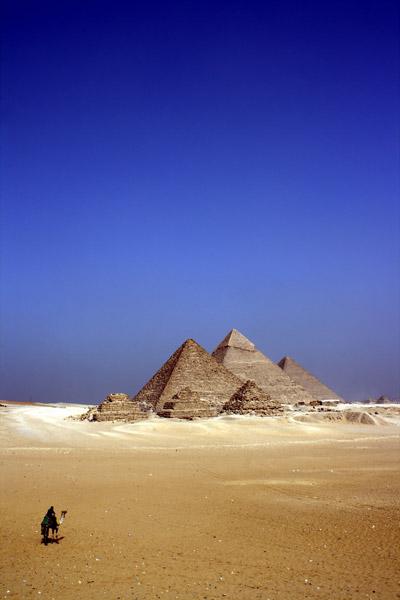

Egypt, a nation at the crossroads of Africa and the Middle East, boasts a culture that is as rich and layered as its millennia-old history . From the monumental legacy of the Pharaohs to the enduring influence of Coptic Christianity and the pervasive traditions of Islam, Egyptian culture is a vibrant...
Located in the heart of Cairo on Tahrir Square, the Museum of Egyptian Antiquities, commonly known as the Egyptian Museum, stands as the oldest archaeological museum in the Middle East . For over a century, it has been the worlds foremost repository of Pharaonic antiquities, offering an unparalleled...
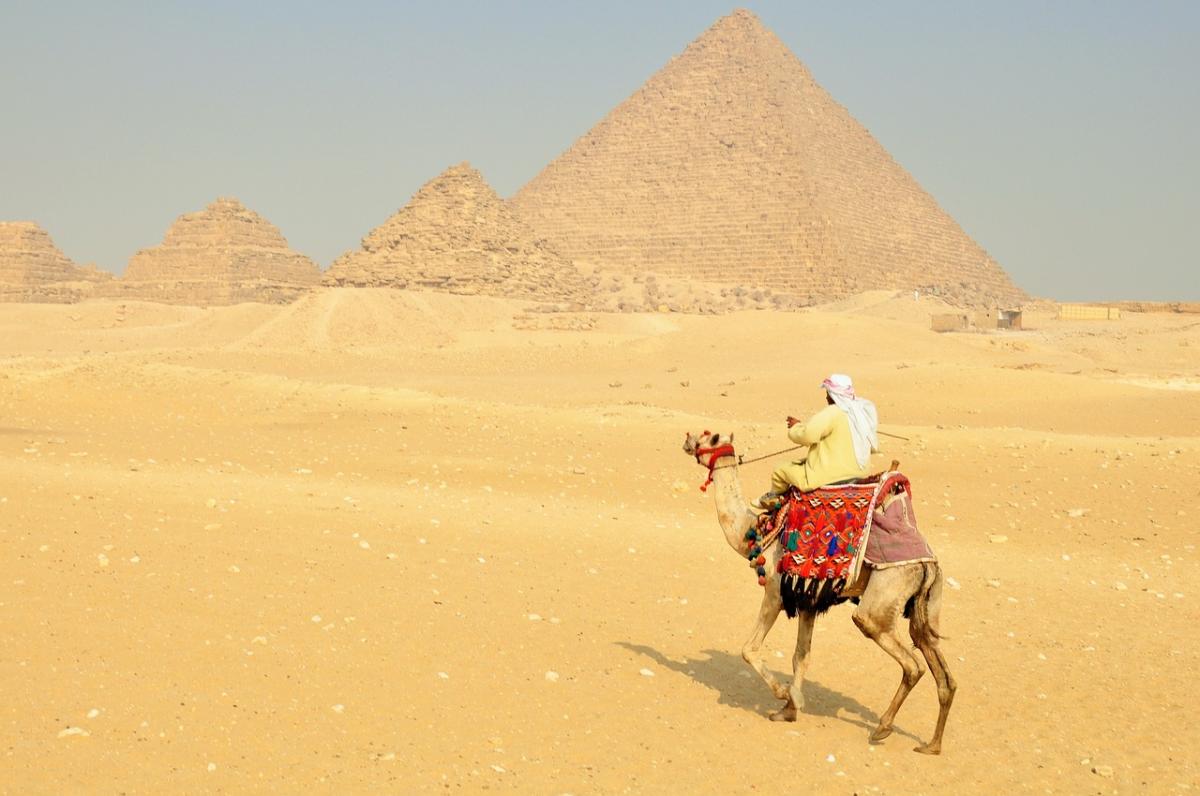
Egypt, the land of pharaohs, ancient tombs, and the life-giving Nile, often conjures images of grand tours and luxurious cruises . However, this cradle of civilization is remarkably accessible for the budget-conscious traveler . With careful planning, you can experience its most iconic wonders without...